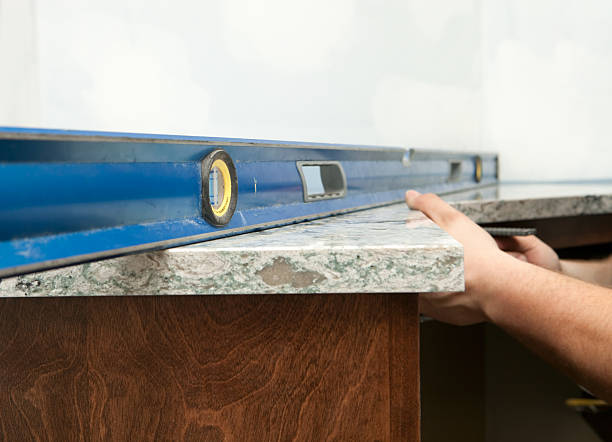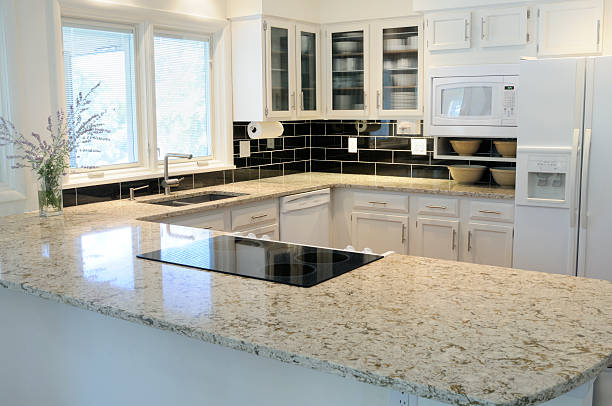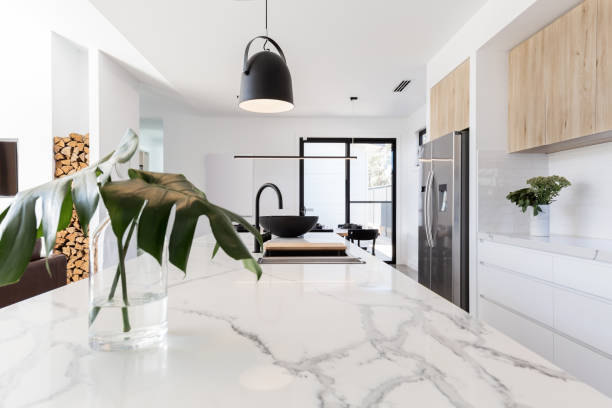6 Methods for Identifying a Sealed Granite Countertop
Granite kitchen countertops are more popular now than they've ever been among those who make home modifications. Aside from being a natural stone that grows over time, granite is also an extremely durable, scratch- and heat-resistant material, making it the material of choice for kitchen countertops in nearly every home. Since it is easy to clean and resistant to stains, a large number of people have been utilizing granite. In addition, granite comes in a variety of hues and designs. Given its resilience and aesthetic appeal, it is not surprising that granite has become one of the most popular materials for home improvement.
Granite can become damaged and scratched, though, if not properly maintained. Granite requires upkeep, unlike typical tiles. Sealing the stone is an essential part of granite upkeep. But what exactly is a granite seal, and is it required? In this article, we will explain what a granite seal is, why it is significant, how to detect if granite has been sealed, and, if necessary, how to seal granite. Stay safe and enjoy the renovation!
What are Granite Seals?
Granite sealants, sometimes known as "granite impregnators," are a transparent, protective coating that helps the stone withstand stains and scratches. Sealants for granite are offered in both water-based and solvent-based formulations. Water-based sealants offer excellent protection against stains, although they may require more frequent reapplication than solvent-based sealants. Solvent-based sealants offer superior protection against stains and scratching, but they should be applied with caution because to their potent fumes.
This substance resembling resin is dispersed throughout the granite and serves as its covering. After a considerable amount of time, the resin is absorbed into the pores of the granite, rendering it resistant to stains and dirt, so preserving the granite's pristine appearance for many years. In addition to repelling water and other liquids, granite sealant makes it simple to wipe up any accidents. For this reason, granite must be carefully sealed before and after installation if it is to be utilized as a kitchen countertop.
Is Sealing Granites Necessary?
Even though granite is a resilient material, it is not completely impervious to damage. Sealing granite surfaces on a consistent basis is one of the most critical things you can do to safeguard them.
Granite sealer forms a barrier that repels water, oil, and other substances that can cause stains, discolouration, and loss of luster. Without this barrier, liquids can permeate the pores of the granite, resulting in permanent discoloration. In addition, unsealed granite is more prone to scratches and chipping since the sealer protects the granite against harm from water, oil, and other substances. When these liquids permeate granite, they can cause the granite to crack or chip. Furthermore, untreated granite is more likely to store germs and other pollutants. By sealing your granite surfaces, you may help them retain their pristine appearance for many years.
Consequently, sealing granite is necessary to safeguard your investment. There are a variety of granite sealers available on the market; therefore, it is essential to select one that meets your specific requirements.
If you are uncertain as to whether or not your granite is sealed, we have outlined 6 ways to determine whether or not your granite is sealed.

How to Determine Whether Granite Is Sealed?
As mentioned previously, granite must be sealed in order to maintain its beauty throughout time.
Sealing the stone helps prevent it from stains and makes it easier to clean. A granite surface that has been sealed will have uniform color and texture throughout. There are a few basic tests you may perform at home to determine if your granite has been sealed.
1. Examine the Granite for a Change in Color
The granite has likely been sealed if it appears darker or shinier than typical. Additionally, you can sprinkle a few drops of water over the granite's surface. Unsealed granite will rapidly absorb water, whereas sealed granite will darken when wet. Sealed granite will also have a more uniform tint, as compared to the natural color fluctuations found in untreated granite.
2. Touch the Granite's Exterior
Wipe the granite's surface with a moist cloth before proceeding. If water beads up and does not penetrate the surface of the granite, then it has been properly sealed. Also, if the granite's surface is slick and smooth, it has likely been sealed. Unsealed granite will have a more porous surface, resulting in a more abrasive and absorbent material.
3. Place a Water Droplet on the Surface of the Granite
Water is a reliable indicator that a granite is not sealed, as it will discolor unsealed granites. The granite has been sealed if water beads up and remains on its surface. If water is absorbed by the granite, it has not been properly sealed.
4. Utilize a White Rag to Examine for Granite Sealant Residue
Wipe the surface of the granite with a white cloth. If black streaks appear on the rag, this indicates that there is sealant residue on the granite.
5. Conduct an Iodine Test for Granite Staining
Apply a drop of iodine to the surface of the granite. If the iodine is absorbed by the granite, this shows that it has not been sealed and is vulnerable to discoloration.
6. Consult a Professional Granite Installer if You Have Questions
If you are still uncertain as to whether or not your granite has been sealed, you may always visit a competent stone repair firm or stone fabricator.
Granites: Do They Require Resealing?
Granite is a magnificent addition to any home, but it does require maintenance to keep it at its best. Depending on the type of granite you have and your cleaning routine, you may need to reseal your countertops every six to twenty months. Using the seal tests listed above, you may determine if your granite need resealing.
The majority of hardware stores stock a variety of granite sealants.
Some sealants must be reapplied frequently, but others might last for decades. When resealing granite tiles, be sure to choose a sealer particularly formulated for use on stone. Using the incorrect sealer might cause damage to the granite and void any applicable warranties.

How to Seal Granite
If you need to reseal your granite countertops, there are a number of granite sealants available on the market. However, you must choose the greatest quality, since applying the incorrect or poor sealant may cause more damage than good.
If you've selected the best product on the market, here's how to seal it for decades.
1. Select the Appropriate Granite Sealant
There are many various types of granite sealers on the market, so it is crucial to select one that is specifically made for granite. Granite is a porous stone; therefore, it is essential to select a sealer that can penetrate the surface and fill the pores.
2. Clean the Top of the Granite Countertop
Before applying granite sealer, it is necessary to thoroughly clean the granite's surface. Use a mild detergent and warm water to eliminate any dirt or debris from the surface. Before beginning, ensure that the granite has been well rinsed of soap and allowed to air-dry.
3. Use the Sealant to treat the Granite
After cleaning and drying the granite, the granite sealer can be applied. Apply a tiny quantity of sealant on a clean cloth and rub it into the granite's surface in a circular motion.
Ensure that the entire surface is uniformly covered.
4. Permit the Granite Sealer to Drizzle
After applying the granite sealer, you will need to wait for it to cure. Depending on the sort of sealant you employ, this could take anywhere from 30 minutes to 24 hours. After the sealant has dried, the granite countertops can be used normally.
5. Reapply Granite Seal as Necessary
It is necessary to reapply the granite sealer every few months in order to protect granite countertops from stains and other damage. If your countertops are heavily utilized, you may need to apply the sealant more frequently.
Sealing your granite is a simple and straightforward technique that will preserve it against stains and fading over time. So, to maximize the benefits, be sure to do it regularly!
If you're interested to have more knowledge about this topic, feel free check this blog post from Denver Stone Plus: https://denverstoneplus.com/6-ways-to-know-if-your-granite-countertop-is-sealed/

